Abstract
Transmembrane sugar transport into immature internodal parenchyma tissue of sugarcane (Saccharum officinarum L.) is a metabolically regulated process as evidenced by its sensitivity to pH, temperature, anaerobiosis, and metabolic inhibitors. All sugars studied—glucose, fructose, galactose, sorbose, glucose 6-phosphate, 3-O-methylglucose, and 2-deoxy-d-glucose—were apparently transported via the same carrier sites since they competed with each other for uptake. External concentrations of these sugars at one-half Vmax were in the range of 3.9 to 8.4 nm. Preliminary data indicated that phosphorylation may be closely associated with glucose transport. The dominant intracellular sugar after 4-hours incubation was sucrose when glucose, glucose-6-P, or fructose was the exogenously supplied sugar; but when galactose was supplied, only 28% of intracellular radioactivity was in sucrose. Sorbose, 3-O-methylglucose, and 2-deoxy-d-glucose were not metabolized. Thus, by using these analogs, transport could be studied independently of subsequent metabolism, effectively eliminating a complicating factor in previous studies.
Full text
PDF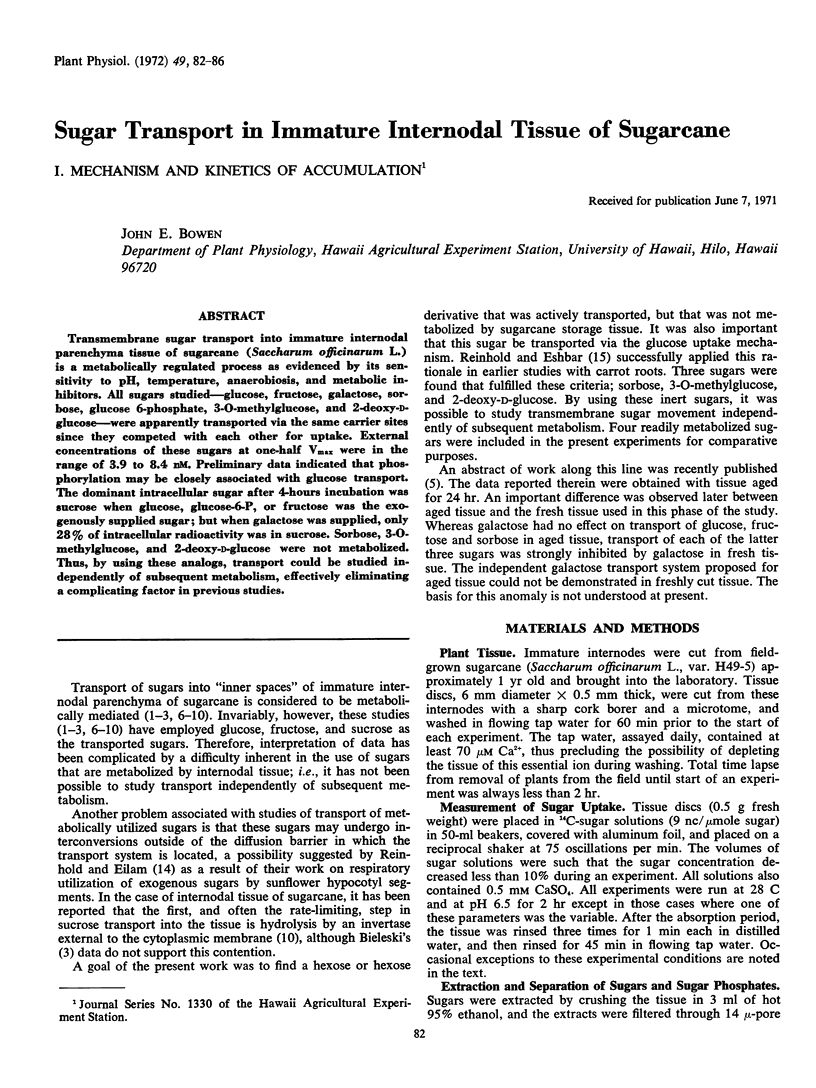
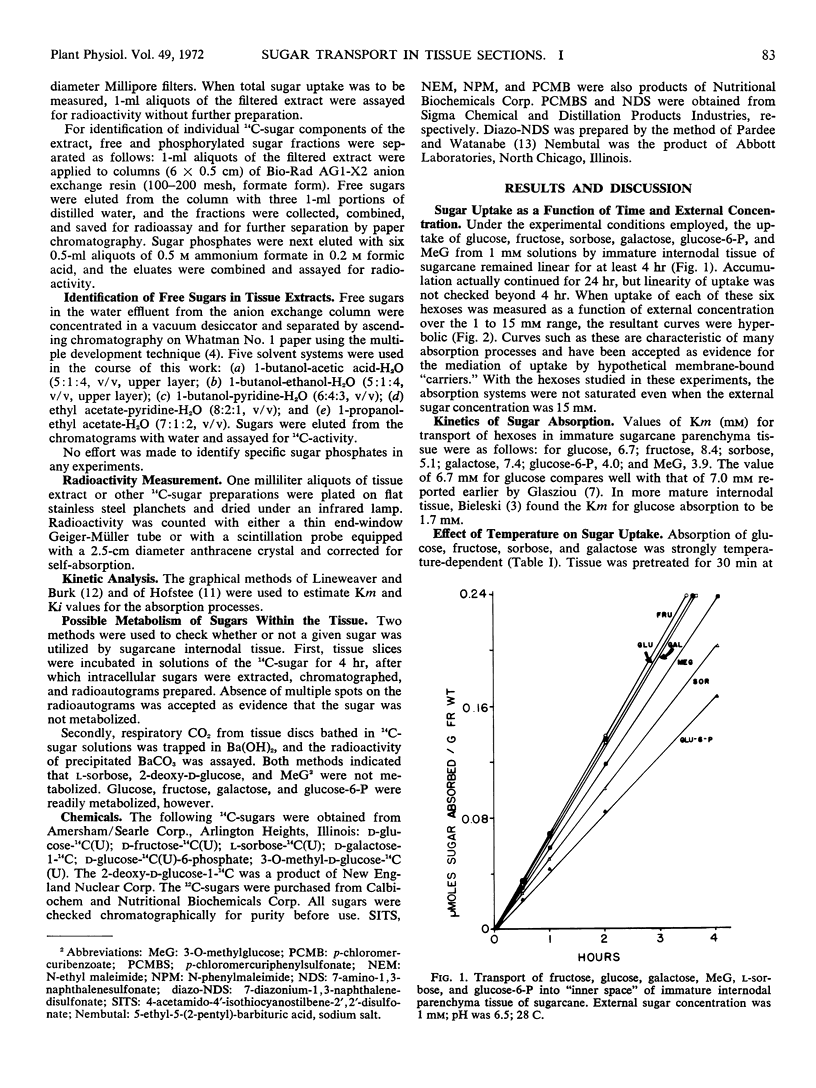
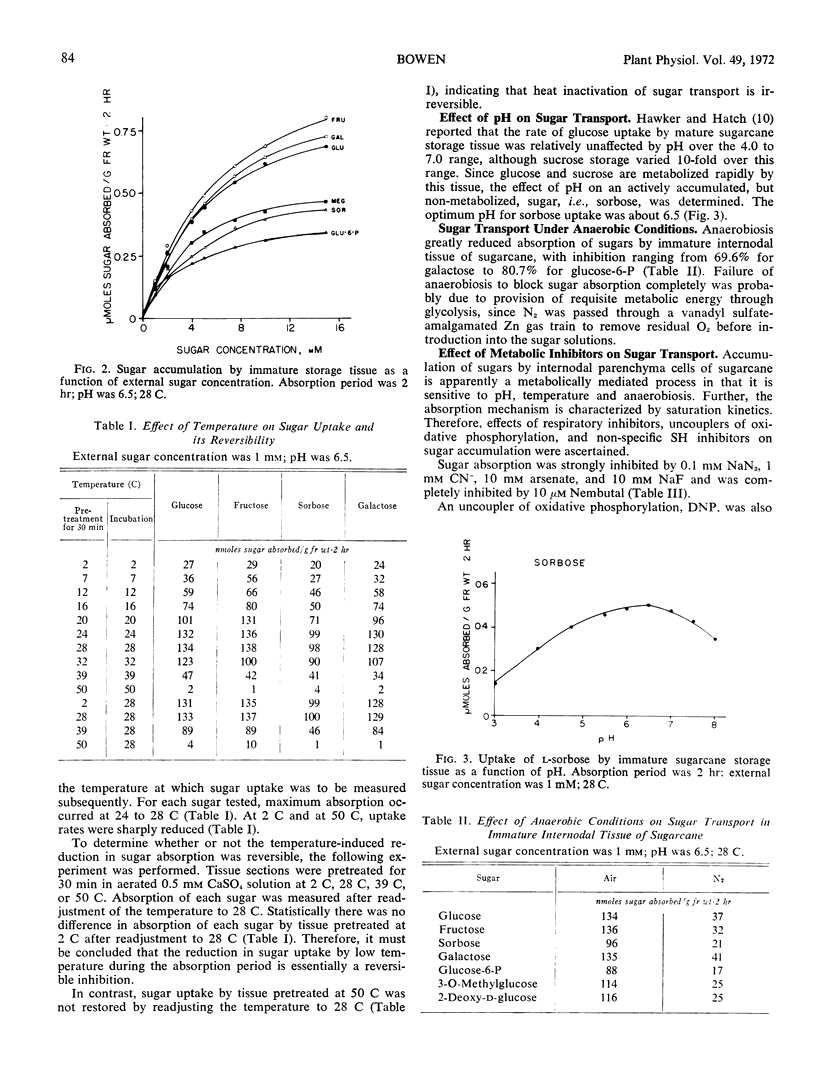
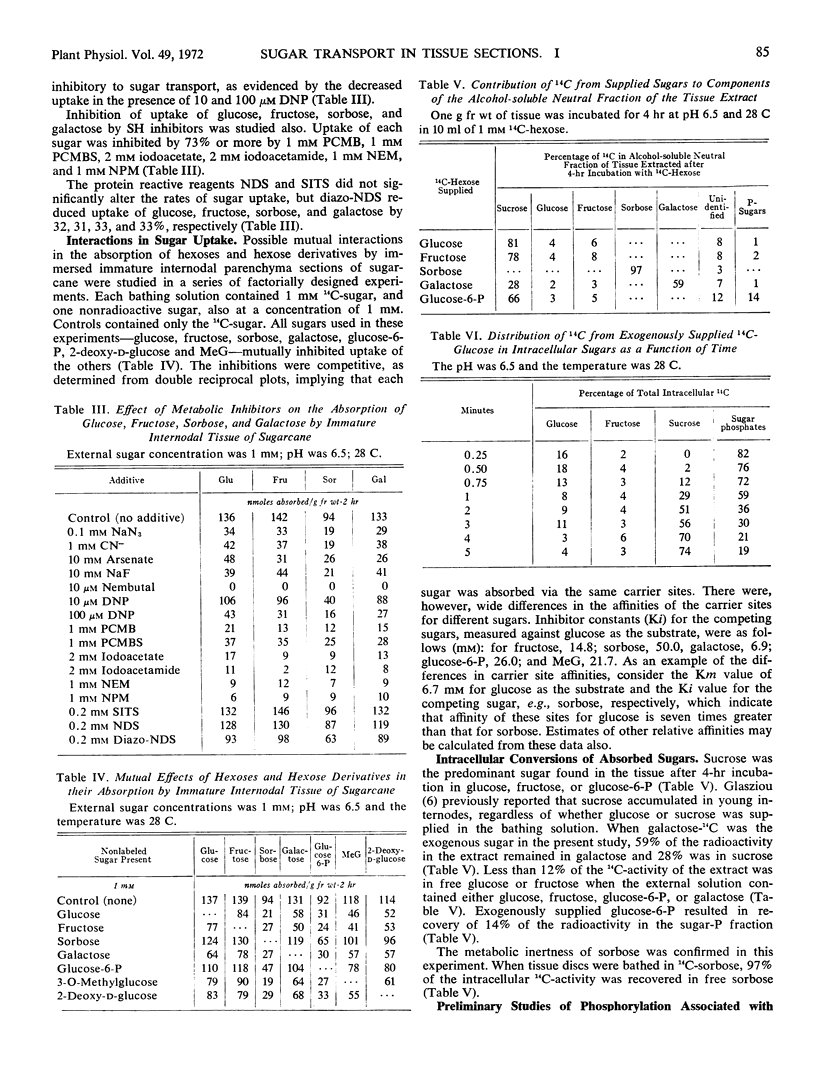
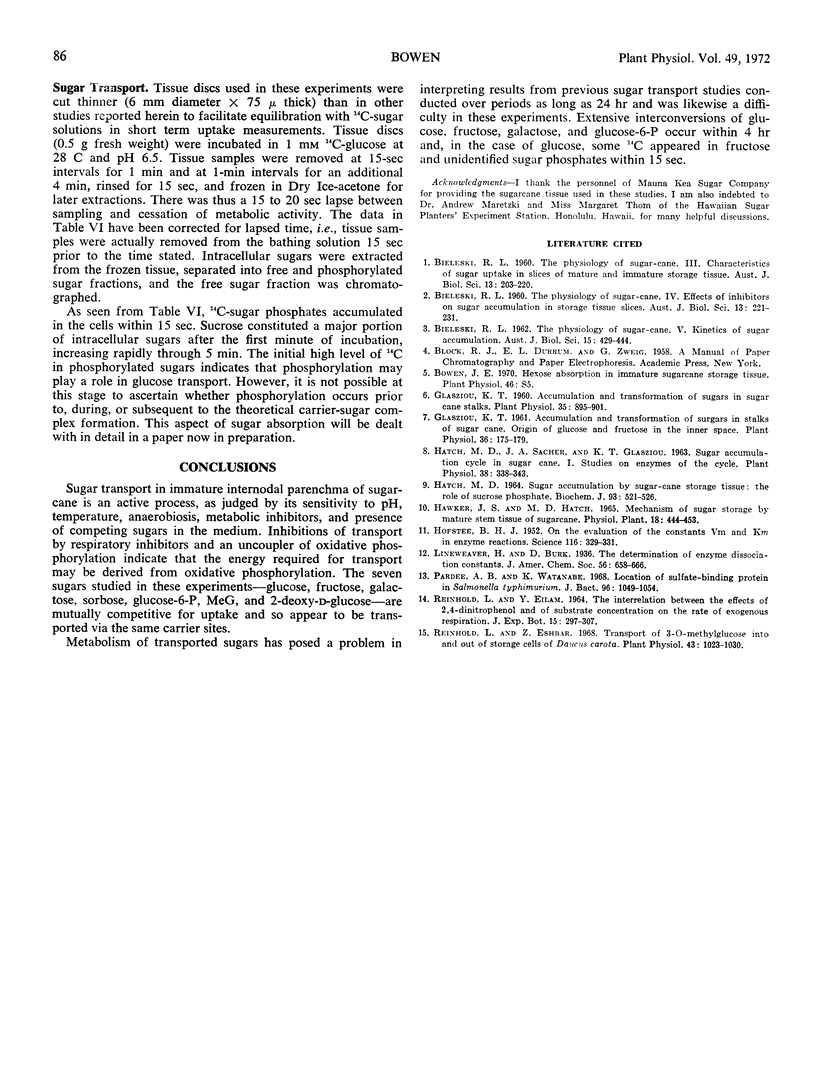
Selected References
These references are in PubMed. This may not be the complete list of references from this article.
- Glasziou K. T. Accumulation & transformation of sugars in stalks of sugar cane. Origin of glucose & fructose in the inner space. Plant Physiol. 1961 Mar;36(2):175–179. doi: 10.1104/pp.36.2.175. [DOI] [PMC free article] [PubMed] [Google Scholar]
- Glasziou K. T. Accumulation and Transformation of Sugars in Sugar Cane Stalks. Plant Physiol. 1960 Nov;35(6):895–901. doi: 10.1104/pp.35.6.895. [DOI] [PMC free article] [PubMed] [Google Scholar]
- HOFSTEE B. H. J. On the evaluation of the constants Vm and KM in enzyme reactions. Science. 1952 Sep 26;116(3013):329–331. doi: 10.1126/science.116.3013.329. [DOI] [PubMed] [Google Scholar]
- Hatch M. D., Sacher J. A., Glasziou K. T. Sugar Accumulation Cycle in Sugar Cane. I. Studies on Enzymes of the Cycle. Plant Physiol. 1963 May;38(3):338–343. doi: 10.1104/pp.38.3.338. [DOI] [PMC free article] [PubMed] [Google Scholar]
- Hatch M. D. Sugar accumulation by sugar-cane storage tissue: the role of sucrose phosphate. Biochem J. 1964 Dec;93(3):521–526. doi: 10.1042/bj0930521. [DOI] [PMC free article] [PubMed] [Google Scholar]
- Pardee A. B., Watanabe K. Location of sulfate-binding protein in Salmonella typhimurium. J Bacteriol. 1968 Oct;96(4):1049–1054. doi: 10.1128/jb.96.4.1049-1054.1968. [DOI] [PMC free article] [PubMed] [Google Scholar]
- Reinhold L., Eshhar Z. Transport of 3-o-Methylglucose Into and Out of Storage Cells of Daucus carota. Plant Physiol. 1968 Jul;43(7):1023–1030. doi: 10.1104/pp.43.7.1023. [DOI] [PMC free article] [PubMed] [Google Scholar]


